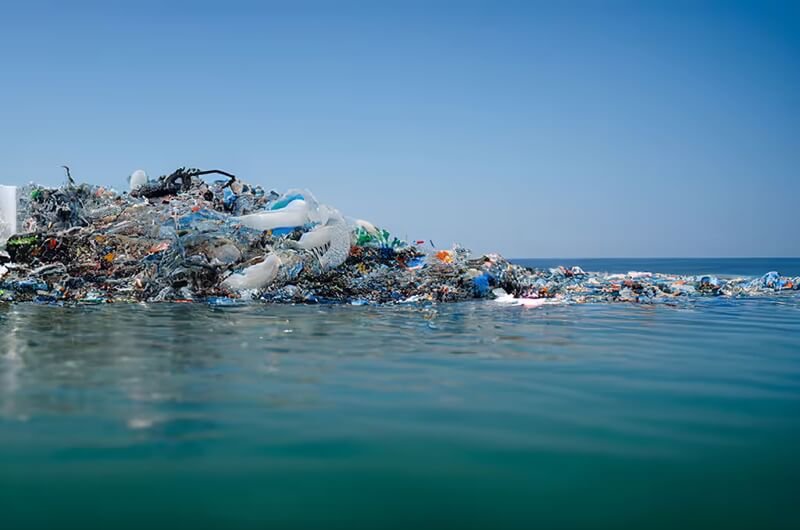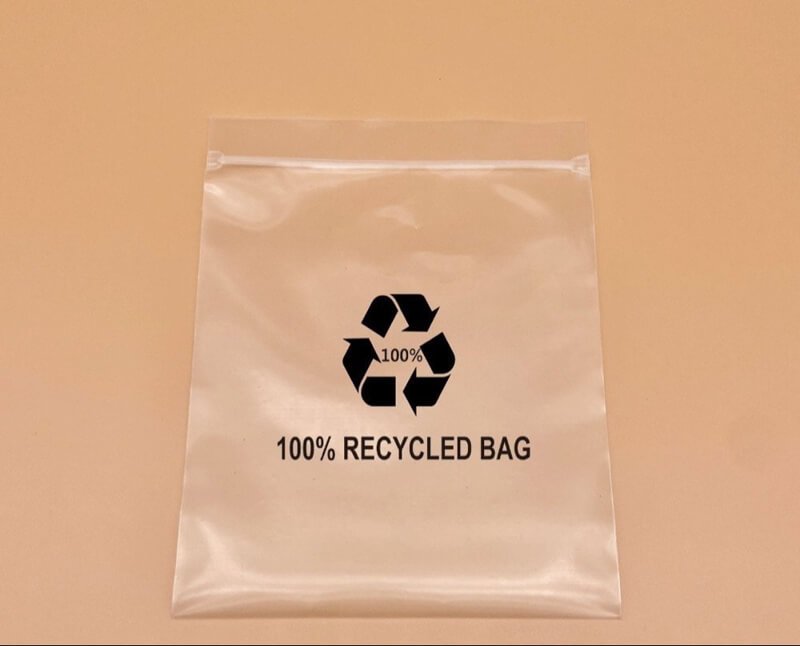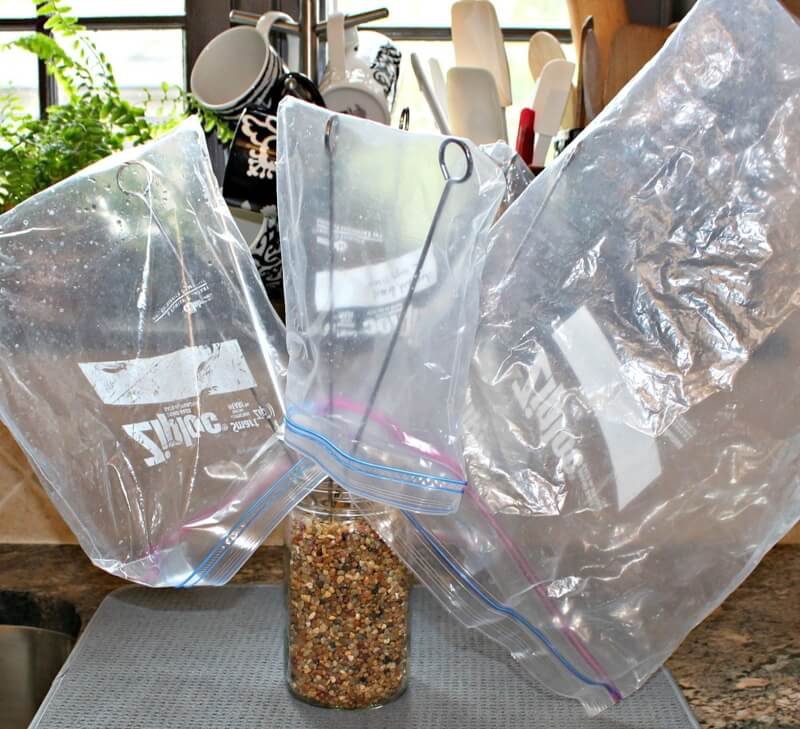Zipper Bags and Environment: Reduce Waste with Smarter Choices
Zipper bags – those handy, resealable plastic pouches – are a staple in most kitchens and homes. We use them for everything from storing leftovers and packing lunches to organizing craft supplies and protecting travel toiletries. But have you ever stopped to consider the environmental cost of this convenience? Traditional plastic zipper bags, while undeniably practical, contribute significantly to the growing global problem of plastic waste. As an individual or a business, making sustainable choices is increasingly important.
This guide explores the environmental impact of conventional plastic zipper bags, from their resource-intensive production to their problematic disposal. We’ll delve into eco-friendly alternatives, including biodegradable, compostable, and reusable options, empowering you to make informed choices. You’ll also learn practical tips for reducing your reliance on single-use plastics and embracing a more sustainable approach to storage and organization.
1. The ubiquitous zipper bag – Convenience vs. cost
Zipper bags, also known as ziplock bags or resealable bags, are undeniably convenient. Their airtight seal keeps food fresh, their clear plastic allows for easy content identification, and their reusable nature (at least for a while) makes them a versatile storage solution for countless items.
From school lunches and travel toiletries to craft supplies and leftover food, these plastic bags have become ubiquitous in modern life. But this widespread convenience comes at a significant environmental cost. This article explores that cost and guides you toward making more sustainable choices, reducing your reliance on single-use plastic and minimizing plastic waste.
2. The environmental impact of traditional plastic zipper bags
To understand the need for eco-friendly alternatives, it’s crucial to grasp the full environmental impact of traditional plastic zipper bags.
2.1 The plastic problem- From production to pollution
Most conventional zipper bags are made from polyethylene (PE), a type of plastic derived from petroleum, a non-renewable fossil fuel. The environmental impact begins with the very creation of these bags:
- Resource depletion: The extraction of oil and natural gas, the raw materials for polyethylene, is a resource-intensive process that can disrupt ecosystems and contribute to habitat loss.
- Energy consumption: Manufacturing plastic is an energy-intensive process, requiring significant amounts of electricity and often relying on fossil fuels for power.
- Greenhouse gas emissions: Both the extraction of fossil fuels and the manufacturing of plastic release greenhouse gases (like carbon dioxide and methane) into the atmosphere, contributing to climate change.
- Air and water pollution: The production of polyethylene can release various pollutants into the air and water, harming ecosystems and human health. The manufacturing impact includes air pollution, water pollution, with a significant carbon footprint.
The environmental impact of plastic bags begins long before they end up in your kitchen drawer or a landfill. The entire lifecycle of plastic, from its creation from fossil fuels to its eventual disposal, has a significant impact on the planet.

2.2 The waste crisis- Landfills, oceans, and the threat to wildlife
The problems with traditional plastic zipper bags don’t end with their production. Their disposal creates a significant waste crisis:
- Landfills: The vast majority of plastic zipper bags are not recycled. They end up in landfills, where they take hundreds of years to decompose. Even then, they don’t truly biodegrade; they photodegrade, breaking down into smaller and smaller pieces of plastic, but never fully disappearing.
- Ocean pollution: A significant amount of plastic waste, including plastic bags, ends up in the ocean. This plastic debris poses a serious threat to marine life and ecosystems.
- Harm to wildlife: Animals, both on land and in the sea, can mistake plastic bags for food and ingest them, leading to starvation, internal injuries, and death. Animals can also become entangled in plastic bags, leading to injury, drowning, or suffocation.
- Microplastics: As plastic bags slowly break down (photodegrade) in landfills or the environment, they release tiny particles called microplastics. These microplastics contaminate soil, water, and even the air. They enter the food chain, posing a potential threat to human health (though the full extent of this threat is still being researched). Microplastics are now found virtually everywhere on Earth, from the deepest ocean trenches to the highest mountain peaks.
Think of every plastic zipper bag you use as potentially ending up in a landfill or the ocean for centuries, slowly breaking down into smaller and smaller pieces of plastic that can harm wildlife and pollute our ecosystems.
2.3 Chemical leaching- A potential long-term hazard
Traditional plastic zipper bags, as they slowly degrade over hundreds of years, can leach potentially harmful chemicals into the surrounding environment. These chemicals can contaminate the soil and water, potentially impacting ecosystems. While the exact chemicals and their long-term effects vary depending on the specific type of plastic, this leaching process poses a long-term hazard, potentially leading to the entry of toxins into the food chain.
3. Eco-friendly alternatives- Reducing your plastic footprint
Fortunately, there are several more sustainable alternatives to traditional plastic zipper bags, allowing you to reduce your reliance on single-use plastics and minimize your environmental impact.
3.1 Biodegradable and compostable zipper bags- A step in the right direction (with caveats)
Biodegradable and compostable zipper bags are often marketed as “eco-friendly” alternatives to traditional plastic bags. However, it’s important to understand the nuances of these terms:
- Biodegradable: This term simply means that the material can break down into natural substances (like carbon dioxide, water, and biomass) eventually. However, it doesn’t specify how long this process will take or under what conditions. Some “biodegradable” plastics still take many years to decompose and may leave behind harmful residues.
- Compostable: This term is more specific. It means that the material can break down into non-toxic components (water, CO2, biomass) under specific composting conditions, usually in an industrial composting facility, within a relatively short timeframe (e.g., 90-180 days).
Many “eco-friendly” zipper bags are made from a blend of plant-based materials (like cornstarch, wheat starch, or sugarcane) and a small amount of PE plastic (to provide strength and flexibility).
Limitations:
- Specific conditions: These bags often require specific conditions (high temperature, humidity, presence of microorganisms) to decompose properly.
- Not always home compostable: Many will not break down fully in a typical home compost bin.
- Not a perfect solution: While generally better than 100% fossil-fuel-based plastic bags, they are not a perfect solution, as they still require resources to produce and may not always decompose as intended.
Be cautious about ‘biodegradable’ claims on plastic bags. Look for certifications like ASTM D6400 (US) or EN 13432 (Europe) to ensure the bags are truly compostable under specific, controlled conditions. Even then, remember that most home compost piles won’t generate the necessary heat for proper decomposition.
3.2 Recyclable zipper bags- Closing the loop (when possible)
Some zipper bags are marketed as “recyclable.” Produced from recycled materials like plastic bottles, and can be recycled again after use.
However, it’s crucial to understand that this usually does not mean they can be recycled in standard curbside recycling bins. Most curbside recycling programs do not accept plastic bags or films (including zipper bags) because they can get tangled in the sorting machinery and cause significant problems.
“Recyclable” zipper bags might:
- Need to be taken to special drop-off locations: Some grocery stores and retailers have collection bins specifically for plastic bags and films.

3.3 Reusable alternatives- The most sustainable choice
The most sustainable approach is to minimize single-use plastics altogether by choosing reusable alternatives. Consider these options:
- Silicone bags: Durable, washable, airtight, and often freezer/microwave-safe.
- Fabric bags (cotton, canvas): Breathable, washable, and suitable for items needing air circulation.
- PEVA bags: A less harmful plastic alternative (PVC-free), reusable and waterproof.
- Beeswax wraps: Natural and reusable for food storage, though not airtight.
- Hard plastic containers: Durable, reusable, and stackable.
4. Consumer and business responsibility- Making informed choices and taking action
Addressing the environmental impact of plastic zipper bags requires a combined effort from both consumers and businesses.
4.1 Reduce, reuse, recycle (and rethink)- The consumer’s power
Empower yourself to make a difference by adopting these principles:
- Reduce: Minimize your consumption of zipper bags. Ask yourself if a bag is truly necessary.
- Reuse: Reuse existing zipper bags multiple times, as long as they are clean and intact.
- Recycle: Recycle plastic zipper bags where facilities exist (usually at designated drop-off locations, not curbside).
- Rethink: Consider your overall consumption habits.

4.2 Business practices- Embracing sustainability and leading the way
Businesses, especially those that use zipper bags for packaging or shipping, have a responsibility to:
- Minimize: Minimize the use of plastic zipper bags in their packaging and operations whenever possible.
- Choose alternatives: Explore and adopt eco-friendly alternatives to traditional plastic zipper bags. This could include:
- Offer incentives: Provide incentives to customers for using reusable bags or refusing single-use bags.
- Educate: Educate customers about the environmental impact of plastic bags and the benefits of sustainable alternatives. Provide clear instructions on how to properly dispose of or recycle the packaging.
- Support policies: Support policies and initiatives that promote sustainable packaging, reduce plastic waste, and improve recycling infrastructure.
5. Challenges and future trends- Towards a more sustainable future
- Cost: Eco-friendly zipper bags can be more expensive than conventional plastic options, presenting a barrier for some consumers and businesses.
- Decomposition conditions: Biodegradable bags often require specific environments to break down, limiting their effectiveness in typical landfills.
- Material innovation: Research continues into alternative materials like paper, plant-based plastics, and even mushroom packaging for truly sustainable solutions.
- Circular economy: The future lies in a circular economy model, designing products for reuse, repair, and recycling, minimizing waste.
- Shift in consumer behavior: Addressing the environmental impact requires a shift towards minimizing single-use plastics and choosing reusable alternatives.

6. FAQs about zipper bags and the environment
6.1 Are all plastic zipper bags bad for the environment?
All petroleum-based plastic zipper bags have a negative environmental impact to some degree. This is due to:
- Fossil fuel reliance: They are made from polyethylene, derived from petroleum.
- Plastic waste contribution: They contribute to the growing problem of plastic waste.
- Slow decomposition: They take hundreds of years to decompose, and even then, they only break down into microplastics.
Some plastics are worse than others, and some companies are making efforts to produce more sustainable options (e.g., bags made from recycled plastic). However, even “eco-friendly” alternatives often have limitations. The most environmentally friendly option is to reduce overall consumption and choose reusable alternatives whenever possible.
6.2 Can I recycle plastic zipper bags in my curbside recycling bin?
In most cases, no. The vast majority of curbside recycling programs (the ones where you put your recyclables in a bin for pickup) do not accept plastic bags or films, and this includes zipper bags. The reason is that these thin, flexible plastics can get tangled in the sorting machinery at recycling facilities, causing significant problems and even shutting down the equipment.
6.3 Where can I recycle plastic zipper bags?
While curbside recycling is usually not an option, there are often other ways to recycle plastic zipper bags:
- Grocery stores/retailers: Many grocery stores, big-box retailers, and other stores have special collection bins specifically for plastic bags and films. These bins are usually located near the store entrance.
- Drop-off locations: Some communities have designated drop-off locations for plastic bags and films. Search online for “plastic bag recycling near me” or check with your local waste management authority.
It’s important to note that even when you recycle plastic bags through these special programs, they are often “downcycled” into lower-quality products (like plastic lumber) rather than being turned back into new plastic bags.
6.4 What’s the best eco-friendly alternative to plastic zipper bags?
The best option depends on your needs, but prioritizes reusability:
- Overall: Reusable bags (silicone, fabric, PEVA, or hard plastic containers) minimize waste.
- Food storage: Silicone bags and beeswax wraps offer versatility.
- Breathability: Fabric bags are best for items needing air circulation.
- Disposable (if necessary): Biodegradable/compostable bags are preferable to traditional plastic, but understand their limitations.
6.5 Are biodegradable or compostable zipper bags a good solution?
Biodegradable and compostable zipper bags are generally better than traditional plastic bags, as they are designed to break down more quickly. However, they are not a perfect solution, and it’s important to understand their limitations:
- “Biodegradable” can be misleading: The term “biodegradable” simply means the material can break down, but it doesn’t specify how long this will take or under what conditions. Some “biodegradable” plastics still take many years to decompose and may leave behind harmful residues.
- “Compostable” is more specific: It means the material can break down into non-toxic components under specific composting conditions, usually in an industrial composting facility. Many compostable bags will not break down properly in a typical home compost pile or in a landfill.
- Look for certifications: To ensure a bag is truly compostable, look for certifications like ASTM D6400 (in the US) or EN 13432 (in Europe). These certifications indicate that the bag has been tested and meets specific standards for compostability.
While biodegradable and compostable bags are a step in the right direction, reducing consumption and choosing reusable options are still preferable from an environmental perspective.
7. Packlove – Providing service for zipper bags and packaging
Packlove specializes in providing high-quality, custom labels, tags, zipper bags, and poly mailers for clothing brands and other businesses. With more than 8 years of experience in the garment industry, particularly in processing labels and tags, we understand the importance of sustainable packaging.
We are committed to offering eco-friendly options, including zipper bags made from recycled materials, biodegradable materials, or reusable materials. We can help you choose the best packaging solutions to meet your needs, align with your brand values, and minimize your environmental impact.
Contact Packlove today for a free consultation on your sustainable packaging needs! We offer a wide range of eco-friendly zipper bags and other packaging solutions to help you reduce your environmental impact.
Read more:
Traditional plastic zipper bags, while convenient, pose a significant environmental burden. Their production relies on fossil fuels, and their disposal contributes to the global plastic waste crisis. However, you can make a difference.
By understanding the impact of these bags and exploring eco-friendly alternatives – biodegradable, compostable, or, best of all, reusable options – you can minimize your environmental footprint. Reduce your reliance on single-use plastics, reuse bags when possible, and choose sustainable options. Together, informed consumers and responsible businesses can move towards a more sustainable future.






















